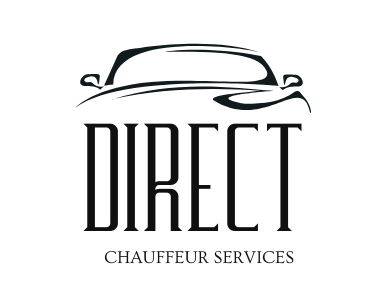The chauffeur business in the UK offers personalized transportation services with a focus on luxury, professionalism, and convenience. This sector caters to clients who seek more than just a means of transport ; they desire a premium experience, whether for corporate events, airport transfers, weddings, or private tours.
Starting such a business requires careful planning, adherence to legal and licensing requirements, investment in a fleet of high-quality vehicles, and the recruitment of skilled drivers. Success hinges on delivering exceptional customer service, leveraging technology for efficient operations, and implementing effective marketing strategies to build a strong brand presence.
Research and planning
Research and Planning are fundamental pillars in establishing a successful chauffeur business in the UK, and this process can be broadly divided into two critical parts : market research and business planning.
Market research
Comprehensive market research is the first step to understanding the competitive landscape and identifying your target audience. This research should include an analysis of existing chauffeur services in the region, to understand their offerings, pricing models and to identify gaps in the market that your company could fill. In addition, it is essential to identify your target audience, whether they are business customers, tourists or people looking for luxury transport for special occasions. This phase allows you to tailor your services to specific needs and preferences, enabling your company to attract and retain loyal customers.
Business planning
Following the insights gained from market research, the next step is to develop a comprehensive business plan. This plan should outline your business objectives, strategies for market penetration and growth, financial projections, and an operational roadmap. It should detail the types of vehicles you plan to include in your fleet, the technology you’ll employ for bookings and operations, marketing strategies to build brand awareness, and a pricing strategy that balances competitiveness with profitability. A well-crafted business plan acts as a blueprint for your venture, guiding your decisions and helping secure financing or investment if required.
Legal requirements and licensing
Navigating the legal requirements and obtaining the necessary licensing are critical steps divided into three main parts for starting a chauffeur company in the UK, ensuring compliance and legality in your operations.
Understanding regulatory requirements
Most of the time, the process starts with acquiring a thorough knowledge of the UK regulations governing chauffeur-driven transport services. This includes familiarity with national regulations and the specific requirements of local councils governing private hire vehicles (PHVs). Key aspects include vehicle standards, driver conduct and operational guidelines to ensure safety and professionalism. This basic knowledge is essential for creating a business that complies with legal standards and fosters customer confidence.
Obtaining operator’s license
The next step is to obtain the necessary licences. A crucial step is to obtain a private transport vehicle operator’s licence from the local council where your business will operate. This licence is compulsory and proves that your company meets the necessary criteria to offer chauffeur services, including managing bookings and maintaining vehicles to specified standards.
Driver and vehicle licensing
The latter concerns the licensing of drivers and vehicles. Each driver must hold a valid private chauffeur’s licence, which involves a background check, a medical examination and a geographical knowledge test. The vehicles used in the service must also be registered, to ensure that they meet the safety and comfort standards set by the regulatory authorities. Compliance with these licensing requirements is essential if you are to operate legally, guarantee passenger safety and establish the credibility of your chauffeur business.
Insurance
Securing the right insurance coverage is a pivotal aspect of starting a chauffeur business in the UK, involving two essential parts: identifying the necessary types of insurance and understanding the coverage specifics.
Identifying necessary insurance types
The first part entails identifying the various insurance types required to fully protect your business, vehicles, drivers, and passengers. This includes not only comprehensive vehicle insurance but also public liability insurance to cover any claims made by third parties for injury or damage. Additionally, considering employer’s liability insurance is crucial if you employ drivers, as it protects against claims from employees in case of work-related injuries or illnesses. Identifying these insurance types ensures that every aspect of your operation is safeguarded against potential risks, providing a solid foundation for business continuity.
Understanding coverage specifics
The second part focuses on understanding the specifics of each insurance policy, including coverage limits, deductibles, and any exclusions. It’s vital to meticulously review policies to ensure they offer adequate protection tailored to the unique needs of a chauffeur service. This might involve negotiating with insurance providers to cover specific risks associated with high-end vehicles or securing additional coverage for luxury amenities offered to clients. Understanding these details ensures that in the event of an accident, damage, or liability claim, your business is prepared to respond effectively, minimizing financial impact and maintaining your reputation for safety and reliability.
Fleet of vehicles
Selecting and maintaining a fleet of vehicles is a critical aspect of running a successful chauffeur business, divided into two main parts: vehicle selection and fleet maintenance.
Vehicle selection
The initial step involves carefully choosing the types of vehicles that will make up your fleet, a decision that should align with your brand’s image and your target market’s preferences. Luxury sedans, executive cars, and limousines are popular choices for their comfort, style, and the statement they make. This selection process should consider factors such as reliability, fuel efficiency, comfort, and the vehicle’s ability to meet the specific needs of your clientele, whether it’s corporate clients, wedding parties, or luxury tour seekers. The aim is to offer a range of vehicles that not only appeal to your target demographic but also differentiate your service in a competitive market.
Fleet maintenance
The second part focuses on the rigorous maintenance of your fleet to ensure safety, reliability, and a superior customer experience. Regular servicing, cleaning, and inspection of vehicles are paramount to maintain their appearance and functionality at the highest standard. Implementing a strict maintenance schedule helps prevent breakdowns, extends the lifespan of your vehicles, and ensures that they always make a good impression.
Additionally, keeping your fleet updated with the latest models and technologies can enhance your service appeal, offering features like Wi-Fi, charging stations, and entertainment systems that cater to the modern consumer’s needs. Balancing these two aspects effectively will position your chauffeur business as a reliable and prestigious choice in the market.
Hiring qualified drivers
The success of a chauffeur business heavily relies on the professionalism and quality of its drivers, making the hiring and training process a two-part endeavor of paramount importance.
Hiring process
Identifying and hiring qualified drivers is the first crucial step. This involves a rigorous selection process where candidates must not only demonstrate impeccable driving skills but also possess a clean driving record, outstanding customer service skills, and a deep understanding of the area’s geography. Background checks, driving tests, and personal interviews are essential components of this process to ensure that candidates meet the high standards expected in the luxury transport industry. It’s important to look for individuals who are not just skilled drivers but also embody the professionalism and discretion that clients expect from a chauffeur service.
Training and development
Once hired, the second part involves a comprehensive training program that equips drivers with the knowledge and skills necessary for exceptional service delivery. This includes training on safe driving practices, customer service excellence, emergency preparedness, and familiarity with the fleet’s technology. Continuous professional development should also be encouraged, offering drivers opportunities to enhance their skills and knowledge, which in turn, elevates the quality of service provided to clients. Investing in your drivers not only enhances the client experience but also fosters a sense of value and loyalty among the staff, crucial for long-term success.
Pricing strategy
Developing an effective pricing strategy for a chauffeur business involves two critical components : competitive analysis and value-based pricing.
Competitive analysis
The first step is to conduct a thorough competitive analysis to understand the pricing landscape within the chauffeur service market. This involves researching what similar services in your area are charging and the range of services they offer for those prices.
It’s essential to identify your direct competitors and analyze their pricing structures, special offers, and any additional charges they may apply. This knowledge allows you to position your pricing competitively, ensuring you’re not undervaluing or overpricing your services in comparison to the market. It also helps in identifying potential gaps in the market that your pricing strategy could exploit to attract more customers.
Value-based pricing
The second component focuses on value-based pricing, which means setting prices primarily on the perceived value your service offers to customers rather than solely on your costs or the market average.
This approach requires understanding what aspects of your service customers value most, be it luxury vehicles, exceptional customer service, additional amenities, or reliability, and pricing your services accordingly. Implementing a value-based pricing strategy might also involve creating tiered pricing levels for different services or customizing packages to meet the varied needs and preferences of your clientele.
This method not only justifies your prices to your customers but also enhances their perception of your brand’s value, potentially increasing customer loyalty and word-of-mouth referrals. Balancing competitive analysis with value-based pricing ensures your chauffeur business remains attractive and profitable in a competitive market.
Marketing and branding
Effective marketing and branding are crucial for establishing a strong presence in the chauffeur business, encompassing two main facets: building a brand identity and implementing targeted marketing strategies.
Building a brand identity
The foundation of a successful chauffeur service lies in crafting a distinct and appealing brand identity. This involves more than just a logo or a color scheme; it encompasses the values, message, and experience your brand promises to deliver.
A strong brand identity resonates with your target audience, differentiating your service from competitors by highlighting unique selling points such as luxury, reliability, exclusivity, or exceptional customer service.
This identity should be consistently reflected across all your business assets and communications, from your vehicle branding to your website, business cards, and even the attire of your drivers. Establishing a cohesive and professional brand identity is vital for instilling trust and recognition among potential clients.
Targeted marketing strategies
Once your brand identity is established, the next step is to deploy targeted marketing strategies to reach and engage your desired audience. This can include digital marketing efforts like search engine optimization (SEO) for your website, social media marketing to engage with clients and showcase your services, and email marketing for personalized offers and updates.
Traditional marketing methods, such as networking with local businesses, partnerships with event planners, and attending industry-related events, can also be effective. Tailoring your marketing efforts to the preferences and behaviors of your target market is key to attracting new clients and retaining existing ones. By combining a strong brand identity with strategic marketing initiatives, your chauffeur business can achieve greater visibility and success in a competitive market.
Technology and booking system
Incorporating technology and an efficient booking system is pivotal for the modern chauffeur business, enhancing operational efficiency, customer experience, and service accessibility. This integration occurs in three critical phases : system selection, customer interface development, and back-end management.
System selection
The first phase involves selecting the right technology and booking system that aligns with your business needs and goals. This system should offer features such as real-time availability, seamless booking and payment processes, and flexibility to accommodate various types of reservations, from airport transfers to full-day hires. It’s also essential to choose a system that can integrate with your existing technology stack, providing scalability and the ability to add functionalities as your business grows.
Customer interface development
Developing a user-friendly customer interface is the second phase, focusing on creating an intuitive and accessible platform for clients to book your services. This interface should be optimized for both desktop and mobile use, ensuring a seamless booking experience across all devices. Clear information presentation, straightforward navigation, and minimal booking steps are key elements to reduce friction and enhance customer satisfaction.
Back-end management
The final phase is establishing robust back-end management capabilities within your booking system. This includes tools for scheduling, dispatching, tracking vehicles in real-time, and managing customer information and preferences.
A comprehensive back-end system enables efficient operations, allowing for quick adjustments to schedules, easy communication with drivers, and personalized services based on customer history. Implementing a sophisticated technology and booking system that covers these three aspects can significantly elevate your chauffeur business, setting a foundation for growth and enhanced service delivery.
Customer service excellence
Achieving customer service excellence in the chauffeur business is essential for building a reputable brand and fostering customer loyalty. This goal can be achieved through two main efforts : personalization of service and proactive problem resolution.
Personalization of service
Ensuring customer service excellence involves deeply personalizing the service to meet and exceed individual client expectations. This means understanding the specific needs and preferences of each customer, from their preferred routes and in-car amenities to their desired level of interaction with the driver.
Tailoring services in this manner not only enhances the customer’s experience but also makes them feel valued and understood, contributing significantly to customer satisfaction and retention. Training drivers to be attentive, courteous, and discreet, and equipping them with the knowledge to offer personalized recommendations, such as dining or entertainment options, further elevates the level of service provided.
Proactive problem resolution
Anticipation and swift resolution of any issues that may arise before, during, or after the service. Implementing a feedback system allows for the collection and analysis of customer input, enabling the identification of potential areas for improvement.
Proactively addressing customer concerns, offering quick and effective solutions to any problems, and demonstrating a genuine commitment to making things right are key practices that contribute to a culture of excellence in customer service. By prioritizing these aspects, a chauffeur business can ensure that it not only meets but consistently exceeds customer expectations, laying the groundwork for long-term success and a positive reputation in the market.
Feedback and improvement
Achieving continuous improvement in a chauffeur business relies heavily on a structured approach to collecting and acting on customer feedback, encompassing two crucial components : feedback collection and iterative improvement.
Feedback collection
The first step involves establishing effective channels for gathering feedback from your clients. This can range from direct methods such as post-service surveys and feedback forms sent via email to more indirect methods like monitoring social media mentions and online reviews.
It’s essential to make the feedback process as easy and accessible as possible for customers, encouraging them to share their experiences. Transparently seeking and valuing customer feedback demonstrates a commitment to service excellence and can provide invaluable insights into areas of your service that may require enhancement.
Iterative improvement
The second component focuses on analyzing the feedback collected to identify patterns and areas for improvement. This analysis should be systematic and lead to actionable insights, whether it’s improving driver training, enhancing vehicle comfort, or streamlining the booking process.
Implementing changes based on customer feedback is crucial for continuous improvement and can significantly enhance customer satisfaction. Moreover, communicating these improvements to your customers can show that you value their input and are dedicated to providing the best possible service. This cycle of feedback and improvement fosters a culture of excellence and innovation within your chauffeur business, contributing to its long-term success and reputation.







